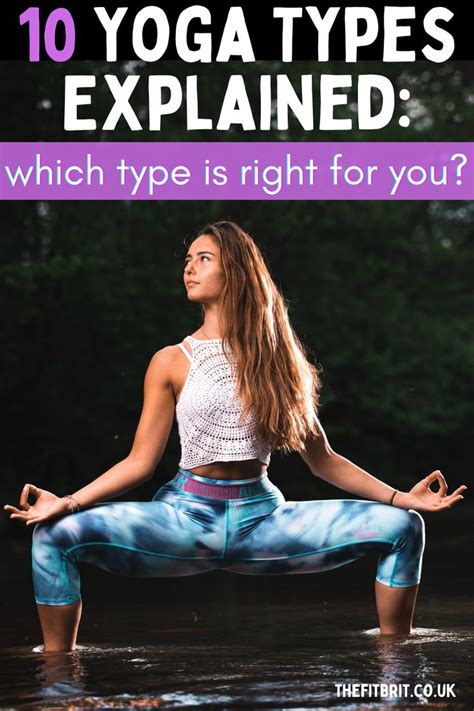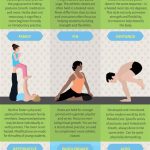Discovering the Perfect Yoga Style for You: Tailored Practices for Every Body
Yoga offers a vast range of practices, each with unique benefits, challenges, and philosophies. Whether you’re a beginner, intermediate, or advanced practitioner, the goal is to find a yoga style that matches your individual needs, body type, and personal preferences. In this article, we will explore different yoga styles, their historical roots, modern applications, and practical tips to help you find the right balance in your practice.
Introduction
With yoga’s global rise in popularity, practitioners are often faced with an overwhelming variety of styles, ranging from the vigorous Ashtanga to the meditative Yin. Many people try multiple types of yoga before settling on one that resonates with them. But how can you know which one best suits you? In this article, we will break down the key concepts of yoga practices, help you assess what you are looking to achieve, and guide you through the nuances of popular yoga styles.
Key Concepts
Before delving into specific styles, it’s essential to understand a few key concepts that define yoga:
- Asana: The physical postures of yoga, designed to improve flexibility, strength, and balance.
- Pranayama: Breathing techniques used to control the flow of life force or energy in the body.
- Vinyasa: The linking of breath with movement, common in many dynamic yoga styles.
- Meditation: Practices focusing on mindfulness and stilling the mind, often incorporated into yoga sessions.
- Drishti: A point of focus used during poses to aid in concentration and alignment.
- Alignment: The correct positioning of the body in each posture to prevent injury and maximize benefits.
- Chakras: Energy centers within the body, often referenced in yogic practices related to emotional and spiritual well-being.
Historical Context
Yoga’s origins date back over 5,000 years, rooted in ancient Indian texts such as the Vedas and the Upanishads. Historically, yoga was more than just physical exercise; it was a complete spiritual and philosophical discipline aimed at achieving enlightenment. Over the centuries, various schools of yoga have emerged, each with its own emphasis:
- Raja Yoga: Focuses on meditation and mental control, considered the “royal path” to enlightenment.
- Karma Yoga: The yoga of action and selfless service, aimed at helping others without expecting results.
- Bhakti Yoga: Devotion and love for the divine, often expressed through rituals, songs, and prayers.
- Jnana Yoga: The path of knowledge, focusing on intellectual study and self-realization.
In the 20th century, yoga was introduced to the West, where it evolved into the physical practice we know today. While many traditional elements remain, modern yoga is often seen as a means to promote physical and mental well-being.
Current State Analysis
Today, yoga is practiced worldwide, with an ever-growing variety of styles. These styles cater to different goals—whether it’s for fitness, relaxation, spiritual growth, or rehabilitation. Here are the most popular modern yoga styles:
- Hatha Yoga: A general term for any style that focuses on physical postures. Hatha classes are often slow-paced and beginner-friendly.
- Vinyasa Yoga: A dynamic, flowing style where postures are linked with breath. Vinyasa can be physically demanding and creative.
- Ashtanga Yoga: A rigorous style that follows a set sequence of poses. It’s known for building strength, flexibility, and stamina.
- Bikram Yoga: Practiced in a heated room, Bikram yoga consists of 26 poses performed in a specific order.
- Yin Yoga: A slow, meditative style that focuses on deep stretching and holding poses for extended periods.
- Restorative Yoga: A calming practice that uses props to support the body in gentle postures, designed to relax the nervous system.
- Kundalini Yoga: Combines dynamic movements, breath work, chanting, and meditation to awaken energy at the base of the spine.
- Iyengar Yoga: Known for its attention to alignment and use of props, Iyengar yoga is suitable for people with injuries or mobility issues.
Practical Applications
Choosing a yoga style is often about aligning your goals with what each style offers. Here’s a breakdown to help you identify which styles might fit your needs:
| Goal | Recommended Yoga Style | Key Benefits |
|---|---|---|
| Improve Flexibility | Vinyasa, Yin | Dynamic stretching, deeper tissue release |
| Build Strength | Ashtanga, Power Yoga | Strengthens core, arms, and legs |
| Reduce Stress | Restorative, Hatha | Relaxes the body and mind, reduces anxiety |
| Boost Energy | Kundalini, Vinyasa | Invigorates the body, increases vitality |
| Improve Alignment | Iyengar, Hatha | Enhances posture, prevents injury |
Case Studies
To better understand how different yoga styles work in practice, let’s look at two case studies:
Case Study 1: Sandra’s Journey to Flexibility
Sandra, a 45-year-old office worker, struggled with stiff joints and tight muscles due to long hours at her desk. After trying several types of yoga, she discovered Yin Yoga. By holding poses for several minutes, she was able to release tension in deep connective tissues. After six months of consistent practice, she experienced increased mobility and decreased joint pain.
Case Study 2: Raj’s Quest for Strength
Raj, a 30-year-old athlete, wanted to complement his strength training with a yoga practice that would help him build flexibility and balance. He turned to Ashtanga Yoga, which allowed him to develop core strength, stability, and mental focus. Over time, his overall athletic performance improved as he became more flexible and agile.
Stakeholder Analysis
Yoga influences a broad range of stakeholders, from practitioners to instructors, studios, and healthcare providers. Here’s an analysis of the key players:
- Practitioners: The primary beneficiaries of yoga, seeking physical, mental, and emotional well-being.
- Instructors: Responsible for guiding students through safe and effective practices, contributing to community-building and personal growth.
- Studios and Gyms: Commercial entities offering a space for yoga, often promoting a specific style or philosophy.
- Healthcare Providers: Incorporating yoga into treatments for chronic pain, mental health, and rehabilitation programs.
Implementation Guidelines
Here are some practical steps to integrate yoga into your life, regardless of the style you choose:
- Start Slow: If you’re new to yoga, begin with beginner classes or slower styles like Hatha or Restorative Yoga.
- Consistency Over Intensity: Regular practice, even for shorter durations, is more effective than occasional, intense sessions.
- Listen to Your Body: Yoga is about honoring your body’s limitations. Don’t push yourself into uncomfortable or unsafe positions.
- Find a Qualified Instructor: Look for certified teachers who can guide you through correct alignment and modifications.
Ethical Considerations
Yoga ethics stem from ancient teachings like the Yamas and Niyamas—guidelines for personal and social conduct. These include principles such as ahimsa (non-violence) and satya (truthfulness). Practicing yoga with mindfulness extends beyond the mat:
- Respect for Cultural








